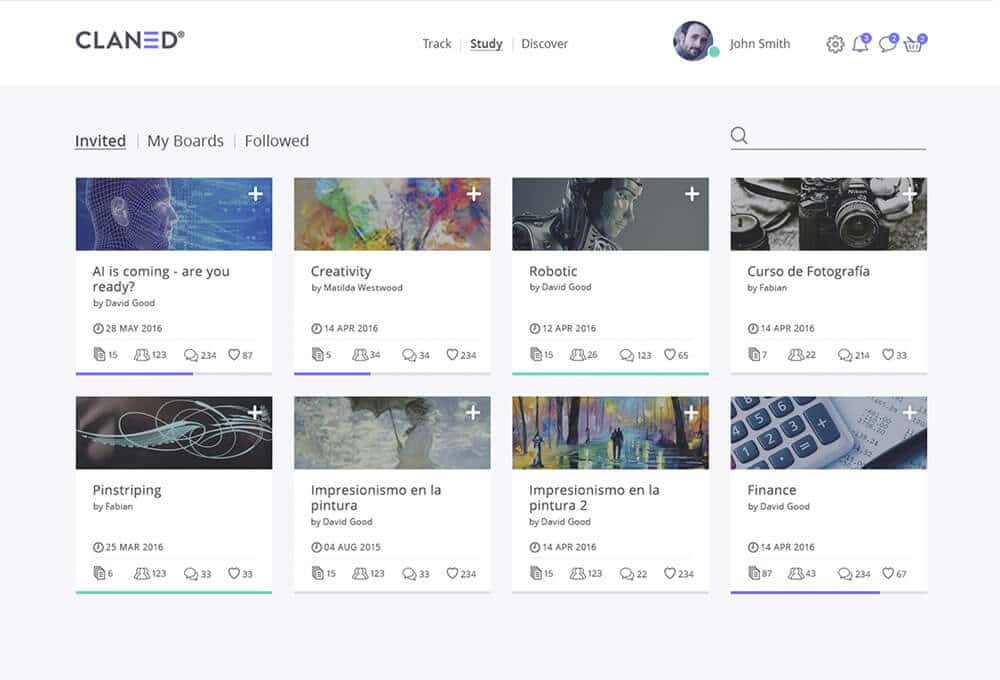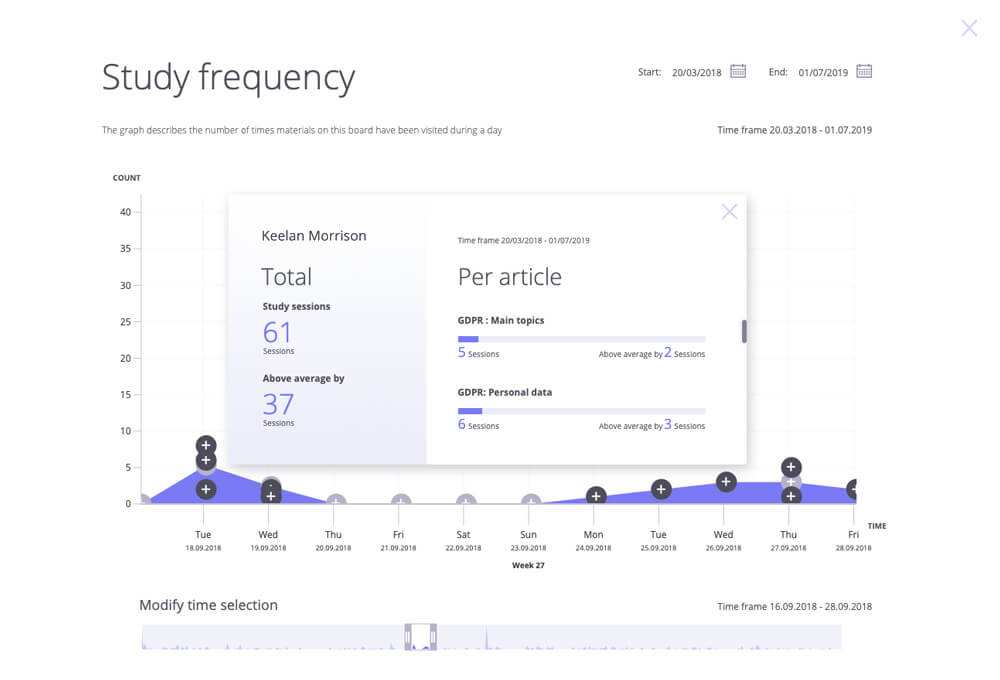An online course involves a lot of moving parts, especially when your online course involves a lot of moving parts, especially when you are just starting.
Answering these questions at the outset would serve as an anchor, help in your online course plan and improve your overall comfort level as you advance.
Here Are The 7 Questions To Ask Yourself
- Who are your learners? Not just their roles in the company/school, but who are they as people? What pre-existing knowledge do they have? What are their abilities and access to/with technology? Why do they need this training/learning, and what might be motivating them to acquire it?
- What are the project goals of your program? The project goal is the aim or intended outcome of completing the learning/course: new skills, new professional qualification, etc.
- What are the learning goals of your program? These are concrete learning objectives that each learner should master by the end of the course.
- What are the limitations you may encounter? These can relate to timelines, budget, resources, or any other external influence on the course.
- How will the content be delivered? (on Claned, obviously 😅) Will there be face-to-face or live virtual sessions? Will there be a facilitator or expert guiding and supporting learners? Will learners interact with each other or mostly independently?
- What formats will your materials take? Is video appropriate for the topic, or is it better suited to text? You don’t need all the answers for this, but having a sense of what to include will help you structure the program and materials.
- How will you assess the learners? Summative or formative assessments? Formal or informal? Some combination? Deciding how you will assess learners and learning is a critical component to have set in place as it will affect what material you deliver, in what order, and where the emphasis is placed. It can help to outline and describe in more detail your learning goals and vice versa.
All of these affect how you plan, prepare your materials, and develop the course structure in a way that is effective and meaningfully related to your objective.
Who are your learners?

Establishing your audience is nothing new. It is something considered by anyone designing a product or providing a service and a central part of growth and marketing across industries.
So, it should not require any stretch of the imagination to understand that this is also something to consider when creating your online course plan. However, what may be easy to underestimate is how important establishing a clear profile of your learners is – it will affect everything you do from the beginning of the process to the end and even beyond as learners go through the course and onwards.
Learner personas contribute to things as broad as the course’s overall feel or tone to small details like how particular information is presented, the type and style of assignments and assessment you give, and the learning outcomes effectiveness.
Imagine you have the most desirable print for a tee-shirt, and instead of considering the various shapes and sizes of people in the population, you only bring XXXL tee-shirts. While most people might wear the tee-shirt, very few of them will because it won’t fit right, you wouldn’t end up selling many tee-shirts, regardless of how great the print is.
The same is true for a learning program – without properly profiling your learners, it becomes challenging to ensure that your plan fits their needs, expectations and abilities.
Luckily, you can apply several tools and processes during the learning program’s initial planning to help you establish a picture of who your learners are, what they need, and knowing that, decide how to serve them best. We call these user personas canvas.
Establishing user personas at the onset of planning gives us anchors that can be referred to at any point in the course creation to check that the content you are producing is in line with who your learners are and their needs.
What are the project goals of your program?
Let’s start with the bigger picture – the project goals. Your project goal is the purpose of your training, why you are creating the course. Ideally, you should be able to put it into one or two clear, concise sentences in the course’s introduction and overview.
For example, if we were planning a course on mathematics for architecture students, the project goal might be something like
“To provide architecture students the understanding and working knowledge of the mathematics involved with designing and constructing safe and structurally sound buildings”.
In addition to providing, you with an excellent and straightforward way to describe your program’s purpose, this statement should serve as a sort of anchor for all the materials and decisions made about the delivery and study methods.
Everything you put into your course should link to this anchor. As you progress with the development and iterations of materials, you should always return to this statement and ask yourself – “does this item help to achieve the project goal?” If not, that may indicate that the particular content or activity should be removed, adjusted, or adapted into something that supports the program goal.
What are the learning goals of your program?
At first glance, project goals and learning goals might seem like two phrasings for the same question, but it would be a mistake to assume so. While these concepts contribute to producing a successful learning program, they serve slightly different purposes and scopes.
The second part of this, the learning goals, functions, and behaves similarly to the project goals but one level down in specificity. Learning goals are concrete learning objectives that each learner should master by the end of the course.
Referring back to our example of mathematics for architecture students, the learning goals, in this case, might include things such as calculating stress-load for various materials and supports. Or even understanding and calculating load dispersion based on the shape and type of support, how to factor in and account for external factors such as environment on the structure.
Like the project goals, learning goals should be clear and concise short statements about what things learners will learn and know how to do after the course. Similarly, they serve as guides for the modules or specific course contents – do the contents serve the learning goals?
How do the individual materials and assignment contribute to communicating the necessary knowledge needed to reach the learning objective? You can refer back to them during the development stage to ensure that your material is relevant and driving your learners towards the learning objectives and, by extension, the project goal.
One way to begin developing learning goals is to work backwards from the project goal – try a brainstorming session with the project goal at the centre, and include all the things that could help achieve it. Pretty soon, some patterns start emerging enough to polish the concepts into clear statements and objectives.
What are the limitations you may encounter?

In a perfect world, these would not exist – endless time, resources. An insular environment would allow for development to head in any direction you desire, but this is rarely possible in reality.
There will always be some limitations or challenges, not enough time, budget, or learners individual circumstances, so it’s best to think a bit about what could influence your program’s development and delivery. When you know this, you can plan strategies to tackle these before they arise.
For example, you are designing a course for working professionals to include some live online group sessions. In that case, in your course plan, you should consider that many of the participants work during the day and may have personal or family obligations in the evening, so the sessions should take place at a time when disruption to their lives will be minimal.
Ensuring that the learners can be present and engaged during these sessions.
We cannot plan for every possibility, but if you’ve done your work by creating learner personas, the most common limitations would likely become apparent.
Budget and timing are common limitations as well. While your idea to create a unique set of animations for each topic in your program may be fantastic, it may not be feasible depending on the time you have to produce the course and the budget available for you to do so.
Considering the resources available to you will help you avoid spending time developing concepts you can’t execute, and having expectations with requirements beyond what is available.
How will the content be delivered?

While the simple answer to this is obvious – online, using Claned (the best LXP out there), there are still several considerations and options that will affect how you structure your learning and what is included in the materials.
Including virtual or face-to-face sessions in addition to online self-study materials, the “blended learning” model is a great way to organize online learning for some reasons we won’t get into now. Suffice to say that what you do here will have a massive effect on your course plan.
Think for a moment about designing a program where learners study independently, online, without any oversight or facilitation from an expert; regardless of the quality of your materials, your learners will most likely have (and should have questions) how will they be answered?
While there may be nothing wrong with doing a course where no facilitator or expert is present to support learners, this requires that you put in additional work to ensure that there are other resources available for learners to answer their questions.
What format will your materials take?

You can apply the same thinking from above to the actual materials themselves. What is the information you are trying to convey? If we were designing a course for engine mechanics, it would not make a lot of sense to provide only written descriptions of engine components.
While this might convey the information, using an image or visual approach is far more suitable if we wanted to describe the pistons’ position in an engine. So, think about your material – what are you trying to communicate, and what might be the best way of sharing it?
By referring to your learning goals, remembering limitations, and carefully considering the nature and desired outcomes from a piece of content or material, you can make better choices about the most suitable format.
How will you assess the learners?

When it comes to assessing learners and their learning, there are several options and possibilities. Choosing suitable assessment methods for your program can open up opportunities, guide you in your course plan and course creation, and present some challenges.
Depending on your topic and learners, some assessment methods might be more applicable than others. Once again, by referring to our learning and program objectives, we can begin to make choices about what type and style of assessments to use and when.
We can break assessments into two main categories – formal and informal. The prior refers to what many may consider standard or traditional methods of assessment.
They include tests, quizzes and graded projects – everyone is clear about what they are doing, and the assessment comes with unambiguous instructions, expectations and objectives.
The latter tend to be less quantifiable, more qualitative, open-ended, and include learner reflections and learner-generated questions, comments, and discussions.
They can be assigned as a project – such as a reflection or learning journal learners share to show their thoughts on the topic concerning them and their ideas.
Both styles of assessments are valuable, and ideally, your course will include a bit of both.
Once again, you can refer to the learning objectives you’ve laid out to help determine which is best to use and when. For example, if we think again about mathematics for architecture students, we would probably want to use some formal assessment.
To test if learners understand the formulas used to calculate structural strength – present them with several equations and solve them to prove they can apply the theory.
However, if we were interested in how this understanding will influence the types of buildings they would like to design, a more informal assessment such as a learner reflection asking them just that might be the more appropriate option.
Most learning programs contain enough space and instances for both types of assessment, so it’s more about keeping in mind what you want learners to show they’ve learned and looking for opportunities for them to demonstrate it.
When designing an online course plan, you will undoubtedly encounter many more questions and challenges. Still, by answering these questions at the onset, you lay the foundations for developing a clear plan with clear objectives and have some idea of how to achieve them or at the very least know what you will need to to reach them and create great online learning.
Claned is here to support you in this process. We love learning, and we love effective learning even more. So, what are you waiting for? Let’s help you take your online learning from average to A+😁







